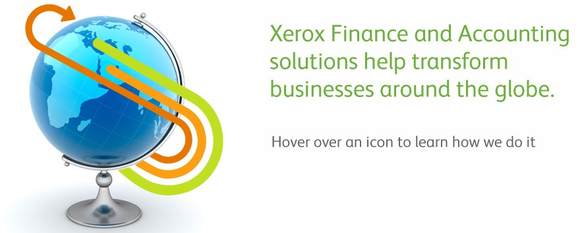In a world where hot stocks like Tesla Motors Inc (NASDAQ:TSLA) get most of the attention, the dinosaurs of the stock market often get overlooked. People hear the name Xerox Corporation (NYSE:XRX), known for its ubiquitous photocopiers, which were all the rage 20-30 years ago, and they assume that the company is a dusty old has-been that should have gone bankrupt a long time ago. But here’s what you see if you go to Xerox’s website:

It seems that Xerox Corporation (NYSE:XRX) hasn’t simply been going down with the photocopying ship but has transformed itself into a services company. Here is what some of Xerox’s services achieve for its customers:
Processes 900 million insurance claims per year
Manages benefits for over 11 million employees
Answers 1.6 million customer interactions per day
Collects 37 billion annual transit fares per year

It was easy to miss this shift since Xerox Corporation (NYSE:XRX) is considered by many to be a boring company, but it looks like some exciting things are happening. The legacy businesses are certainly in decline, but growth in services is picking up much of the slack. Total revenue did decline a bit in 2012, but services revenue increased by 6.4% year-over-year. What’s more, 84% of the company’s revenue is annuity based, which means that the company’s results should be fairly stable going forward.
An improving picture
Xerox faced tough times in the early 2000’s, with bankruptcy rumors swirling. Today the company is in a far better financial position, but the stock price is at about the same level, under $10 per share. It seems that the market is still pessimistic when it comes to Xerox, but is this justified? Is there any chance of a Xerox bankruptcy in the near future? To answer that question I’ll calculate the Altman Z-Score.
The Altman Z-score is a formula that combines a series of ratios involving items from a company’s financial statements and results in a single number. If this number is below 1.81 then the company is considered distressed and has a high likelihood of bankruptcy within two years’ time. I won’t go into the details here, but this is how the Z-score has changed over the past 5 years:
| Year | Z-Score |
|---|---|
| 2012 | 1.78 |
| 2011 | 1.66 |
| 2010 | 1.05 |
| 2009 | 1.58 |
| 2008 | 1.67 |
Xerox is just barely in the distressed zone, but its Z-score has been improving. So while Xerox’s financial position is a bit tenuous the trend is in the right direction.
Significant debt
Xerox Corporation (NYSE:XRX) has quite a bit of debt on the books. At the end of Q1 total debt sat at $8.54 billion with an additional $3.77 billion in pension obligations, which I generally count as debt-like. The company does have about $1 billion in cash, putting the net debt at $11.31 billion. This works out to $8.84 per share of net debt.
Xerox has managed to greatly reduce its annual interest payments over the last few years. In 2010 Xerox paid $592 million in interest, while in 2012 that number has dropped to $198 million. This drop in interest expense is one of the reasons why the net income jumped so much between 2010 and 2012.
More profitable than it appears
Net income in 2012 was $1.195 billion, or $0.88 per share. But this number actually understates Xerox’s true cash profits. A better number to look at is the owner earnings, a variation of the free cash flow. Owner earnings for 2012 came in at $1.88 billion, or $1.42 per share, significantly higher than net income.
The stock currently trades for about $9.80 per share, and adding to this the net debt the P/OE ratio sits at about 13. So Xerox is not an outrageous bargain, but it’s certainly not expensive either.
I’ll do a simple discounted cash flow calculation to estimate the fair value of Xerox. I’ll assume that owner earnings grow at just 3% per year, a rate which may end up being optimistic given the declining legacy businesses or pessimistic given the growing service business. For a discount rate I’ll use both 12% and 15% and use them to define a fair value range. Using the above parameters and adjusting for the net debt I arrive at a fair value range for a share of Xerox Corporation (NYSE:XRX) of $3.35 – $7.41.




